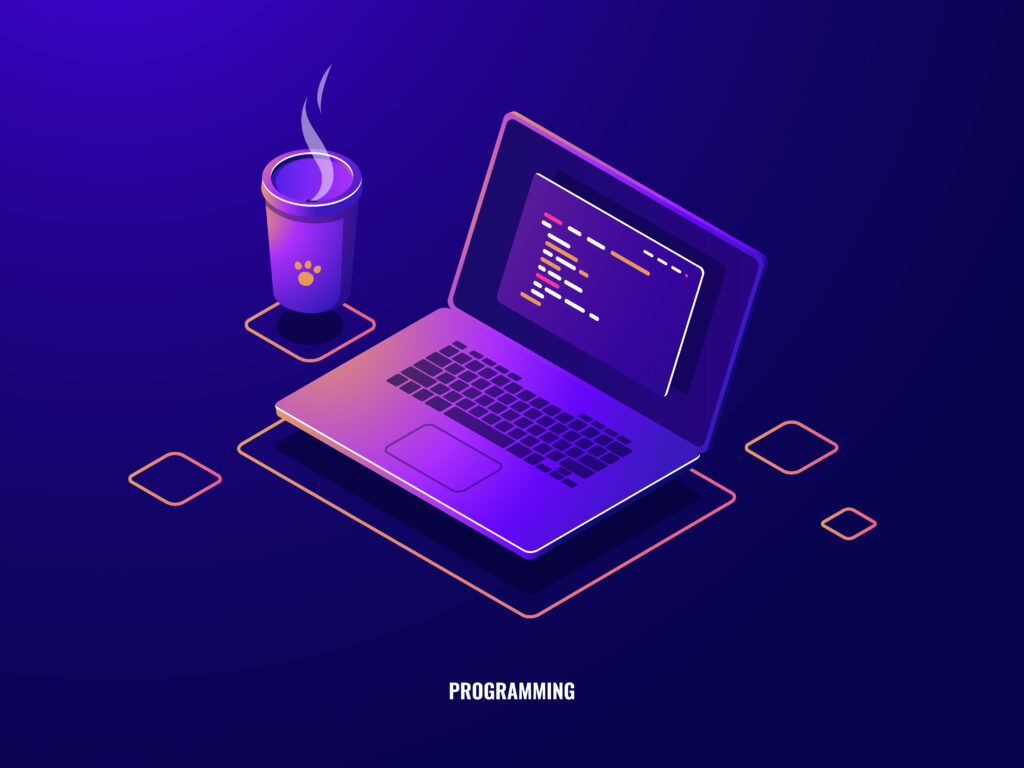The Changing Face of Software Development
Software development has traditionally been a complex, time-consuming process requiring specialized skills in programming languages, frameworks, and infrastructure management. However, the emergence of low-code and no-code platforms is fundamentally altering how applications are built, who can build them, and how quickly they can be deployed. These platforms are not just a passing trend—they represent a fundamental shift in how businesses approach digital transformation.

This comprehensive analysis explores every aspect of low-code and no-code development, from how these platforms work to their long-term implications for businesses, developers, and the broader technology landscape. We will examine real-world use cases, emerging trends, potential challenges, and what the future holds for this rapidly evolving space.
Low-Code and No-Code Platforms
Defining the Key Concepts
Before diving into the future, it’s essential to understand what low-code and no-code development entails:
- Low-Code Development: Platforms that allow users to create applications through graphical interfaces and configuration rather than traditional hand-coding. While some coding may still be required for advanced functionality, the majority of the development process is simplified through drag-and-drop components and pre-built modules.
- No-Code Development: Even more accessible than low-code, no-code platforms enable users with zero programming experience to build fully functional applications using visual development tools. These systems abstract away all underlying code, allowing business users to create apps through intuitive interfaces.
Core Components of Low-Code/No-Code Systems
These platforms typically include:
- Visual Development Interfaces
- Drag-and-drop builders for UI design
- Pre-configured templates for common app types
- WYSIWYG (What You See Is What You Get) editors
- Backend Automation
- Built-in database management
- Automated API integrations
- Cloud deployment with minimal configuration
- Workflow and Logic Builders
- Rule-based automation tools
- Decision trees for app behavior
- Conditional logic without writing code
- Cross-Platform Compatibility
- Single-application development for web and mobile
- Responsive design handling
- Native app export capabilities
The Driving Forces Behind Low-Code/No-Code Adoption
Several key factors are accelerating the adoption of these platforms across industries:
1. The Growing Demand for Digital Transformation
Businesses in every sector are under pressure to digitize operations, improve customer experiences, and streamline workflows. Traditional development cycles can’t keep pace with these demands, making low-code/no-code solutions an attractive alternative.
2. The Persistent Shortage of Skilled Developers
Despite increasing demand for software, there remains a significant gap in available developer talent. Low-code/no-code platforms help bridge this gap by enabling “citizen developers”—business users who can create applications without deep coding knowledge.
3. The Need for Speed in Application Development
In competitive markets, the ability to rapidly prototype and deploy applications provides a significant advantage. Where traditional development might take months, low-code/no-code solutions can deliver working applications in days or weeks.
4. Cost Efficiency for Businesses of All Sizes
The economics of software development are changing. Small and medium businesses that couldn’t previously afford custom software can now build tailored solutions at a fraction of traditional development costs.
5. The Rise of Remote and Distributed Work
The shift to remote work has increased demand for custom internal tools. Low-code/no-code platforms allow non-technical team members across locations to collaborate on application development without centralized IT teams.
Industry-Specific Applications and Use Cases
The versatility of low-code/no-code platforms means they’re being adopted across virtually every industry. Here are some of the most impactful applications:
Healthcare: Improving Patient Care Through Rapid Innovation
Hospitals and healthcare providers are using these platforms to:
- Build custom patient portals for appointment scheduling and medical records access
- Develop internal tools for staff scheduling and resource management
- Create compliance tracking systems for healthcare regulations
- Implement telehealth solutions quickly during emergencies
Case Study: A mid-sized hospital network used a no-code platform to develop a COVID-19 vaccine management system in under two weeks, handling scheduling, consent forms, and follow-up communications without any custom coding.
Financial Services: Modernizing Legacy Systems
Banks and financial institutions are leveraging low-code/no-code to:
- Automate loan approval workflows
- Create customer onboarding portals
- Develop fraud detection algorithms
- Build regulatory reporting tools
Example: A regional bank replaced its paper-based small business loan application process with a no-code solution that reduced approval times from weeks to days while improving compliance tracking.
Retail and E-Commerce: Enhancing Customer Experiences
Retailers are using these platforms for:
- Custom inventory management systems
- Personalized loyalty programs
- AI-powered recommendation engines
- Omnichannel customer service tools
Real-World Impact: An online fashion retailer built a no-code chatbot that handles 65% of customer inquiries, reducing support costs by 40% while improving response times.
Education: Transforming Learning Management
Educational institutions are applying low-code/no-code to:
- Develop custom learning management systems
- Create student information portals
- Build alumni engagement platforms
- Automate administrative processes
Implementation Example: A university department created a no-code application to track student internships, replacing spreadsheets and manual processes while providing real-time analytics.
Manufacturing: Optimizing Operations
Factories and production facilities are using these tools for:
- Equipment maintenance tracking
- Quality control systems
- Supply chain visibility dashboards
- Employee safety reporting
Success Story: A manufacturing plant implemented a low-code solution that reduced equipment downtime by 30% through predictive maintenance alerts.
Technical Capabilities and Limitations
While powerful, low-code/no-code platforms have both strengths and constraints that organizations must understand:
Strengths of Current Platforms
- Rapid Prototyping and Iteration
- Ideas can be tested quickly without large investments
- Continuous improvement is easier with visual tools
- Reduced Technical Debt
- Standardized components minimize custom code maintenance
- Platform updates handle underlying infrastructure
- Cross-Functional Collaboration
- Business and IT can work together more effectively
- Requirements can be visualized rather than documented
- Scalability for Many Use Cases
- Cloud-based solutions handle growing user bases
- Integration capabilities extend functionality
Current Limitations and Challenges
- Performance Constraints
- Highly complex calculations may be slower
- Large datasets can present challenges
- Customization Boundaries
- Unique business logic may require workarounds
- Platform restrictions can limit creativity
- Vendor Dependency Risks
- Switching costs can be high
- Future pricing changes are unpredictable
- Security and Compliance Considerations
- Data residency requirements may apply
- Industry-specific regulations must be verified
Emerging Trends Shaping the Future
Several key developments are influencing where low-code/no-code platforms are headed:
1. Artificial Intelligence Integration
AI is being embedded into platforms in multiple ways:
- Automated Code Generation: Some platforms now use AI to convert visual designs into cleaner, more efficient code
- Smart Suggestions: Systems recommend optimal workflows and components
- Natural Language Processing: Users can describe what they want in plain language, and the platform builds it
2. Expansion Beyond Basic Applications
Platforms are moving into more sophisticated domains:
- IoT Application Development: Connecting and managing devices visually
- Blockchain Interfaces: Creating smart contract dashboards
- Machine Learning Models: Building and deploying AI without coding
3. Professional Developer Tools
Rather than replacing coders, platforms are evolving to assist them:
- Hybrid Development Environments: Combining visual tools with code editors
- Team Collaboration Features: Version control and commenting for mixed teams
- Extension Capabilities: Letting developers build custom components
4. Industry-Specific Solutions
Vertical-specific platforms are emerging for:
- Healthcare compliance applications
- Financial services automation
- Government case management
- Education administration
5. Mobile-First and Progressive Web Apps
Platforms are improving capabilities for:
- Native mobile app development
- Offline functionality
- Push notifications
- Device hardware access
The Evolving Role of Professional Developers
Contrary to some fears, low-code/no-code isn’t eliminating developer jobs—it’s transforming them:
New Opportunities for Developers
- Platform Customization
- Building extensions and components
- Creating templates for business users
- Integration Architecture
- Connecting multiple systems
- Designing data flows
- Governance and Best Practices
- Establishing development standards
- Implementing security protocols
- Complex Problem Solving
- Handling edge cases
- Optimizing performance
Changing Skill Requirements
Future developers will need:
- Platform-specific expertise
- Integration knowledge
- Business process understanding
- Governance and compliance skills
Implementation Strategies for Businesses
Organizations adopting these platforms should consider:
1. Assessing Use Cases
Not all applications are suitable. Evaluate based on:
- Complexity requirements
- Performance needs
- Security considerations
- Long-term maintenance
2. Building Internal Capabilities
Successful adoption requires:
- Training programs
- Center of Excellence teams
- Governance frameworks
- Community of practice
3. Managing Change
Address cultural challenges:
- IT department concerns
- Business user expectations
- Process redesign needs
- Success measurement
4. Planning for Scale
Consider:
- Platform selection criteria
- Integration architecture
- Data management strategy
- Vendor lock-in mitigation
Security and Compliance Considerations
As these platforms handle more critical business functions, security becomes paramount:
Key Security Aspects
- Data Protection
- Encryption standards
- Access controls
- Audit trails
- Regulatory Compliance
- Industry-specific requirements
- Geographic data laws
- Certification standards
- Application Security
- Vulnerability management
- Secure development practices
- Penetration testing
Shared Responsibility Models
Understanding who manages what:
- Platform provider responsibilities
- Customer responsibilities
- Third-party integrations
The Long-Term Outlook: 5-10 Year Projections
Looking ahead, several developments seem likely:
1. Mainstream Adoption Across Industries
By 2030, we can expect:
- 80%+ of enterprises using these platforms
- Standardization of development practices
- Mature governance frameworks
2. Convergence with Traditional Development
The boundaries will blur with:
- More professional developer tools
- Better interoperability
- Unified DevOps pipelines
3. Specialization and Verticalization
We’ll see more:
- Industry-specific platforms
- Regulatory-compliant templates
- Domain-expert focused tools
4. Advanced Capabilities
Future platforms may offer:
- AI-assisted development
- Voice-driven creation
- AR/VR interface builders
- Quantum computing interfaces
Frequently Asked Questions (FAQ)
1. Will low-code/no-code replace traditional coding?
No, but it will become the default approach for many business applications. Complex systems and performance-critical applications will still require traditional coding.
2. How secure are applications built with these platforms?
Security depends on the platform’s architecture and how it’s implemented. Reputable vendors invest heavily in security, but organizations must still follow best practices in configuration and access control.
3. What types of applications shouldn’t be built with low-code/no-code?
Applications requiring:
- Extreme performance optimization
- Unique architectural requirements
- Specialized hardware integration
- Unusual data processing needs
4. How do I choose between low-code and no-code?
Consider:
- Technical skills of users
- Need for customization
- Long-term maintainability
- Integration requirements
5. What’s the learning curve for these platforms?
Varies by platform complexity, but most business users can become proficient with basic applications in weeks rather than the years needed for traditional coding.
6. How do these platforms handle updates and maintenance?
The vendor typically manages underlying infrastructure updates. Application owners maintain their business logic and configurations.
7. Can I migrate from a low-code/no-code platform to custom code later?
Some platforms allow exporting code, but significant rework is often needed. It’s best to evaluate long-term needs upfront.
Conclusion: Preparing for the Low-Code/No-Code Future
The rise of low-code and no-code development represents one of the most significant shifts in how software is created since the advent of high-level programming languages. These platforms are democratizing application development, enabling faster digital transformation, and changing the relationship between business and technology teams.
Organizations that strategically adopt these tools will gain competitive advantages through:
- Faster time-to-market for digital solutions
- Lower development costs
- Greater business agility
- Improved cross-functional collaboration
However, success requires thoughtful implementation—recognizing where these platforms excel while understanding their limitations. The future belongs to organizations that can effectively combine the speed of low-code/no-code with the power of traditional development when needed.
As the technology continues to evolve, we can expect even more sophisticated capabilities, deeper integrations, and broader adoption across industries. The companies that start building their low-code/no-code competencies today will be best positioned to leverage these advancements tomorrow.

